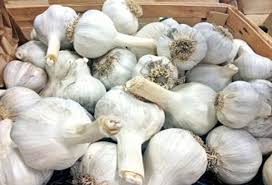MANILA – One strong indication of the presence of cartels is a sudden, irregular change in market prices, and this is what has gotten the chair of the Senate agriculture committee angry with respect to the supply and pricing of garlic.
According to Sen. Cynthia Villar, prices have fluctuated sharply between May and June.
This time round, the antitrust watchdog may be brought in to investigate.
Economist Arsenio Balisacan, chairman of the Philippine Competition Commission (PCC), elaborated on the situation that has caused the alarm bells to be sounded by the senator.
“If there is a cartelistic arrangement or abuse of dominance in the market, ang mangyayari doon biglang tataas ang presyo, but over time bababa rin [what will happen is that prices will abruptly spike, but decline over time].”
It’s like the players “agreed to fix prices by limiting, say, the quantity available in the market and that can be one week, two weeks, one month,” added Balisacan.
That’s certainly one of the things the PCC might look into, once Senator Villar asks them to conduct a formal investigation on the matter.
Based on Philippine Statistics Authority data, garlic prices hit P200 a kilo during the last week of April until May, from just P160 in March. The situation is reminiscent of 2014, when prices shot up to as much as 300 a kilo.
What puzzles most vendors in the market, however, is the large volume of supply that arrived during the last week of June, causing prices to drop as low as P80 starting last week.
“Tulad dati nagkakaubusan, so ngayon ayon na, lahat lumalabas na [Before, supply was quickly disappearing from the market; but now they’re surfacing],” observed garlic vendor Lanie Manapat.
The antitrust agency said that if an inquiry is ordered, they will be looking at it from all angles.
That means speaking to trade organizations, as well as looking into the Bureau of Plant Industry’s approval process for import permits.
According to Balisacan, the question right now would be: are imports too small relative to what’s needed, or were import permits issued for a big volume but only a smaller volume arrived? Such could be the start of a cartel forming, he added.
Villar earlier scolded the BPI, which falls under the Agriculture department, for not penalizing importers who deliberately bring in fewer garlic shipments than needed.
The bureau insisted, though, that it has done its part to curb illicit activity, by inspecting warehouses and meeting with various companies.
BPI officials also claimed it’s not within their mandate to monitor prices and cartel behavior.
Dr. Vivencio Mamaril, BOI director, explained in a telephone interview: “Mandato talaga ng BPI on matters of plant lang. Siguraduhin na yung papasok na onion dito ay malinis at walang sakit [The BPI’s mandate strictly speaking pertains only to the condition of the plants, i.e., ensure that onions coming in are clean and free of disease.” The more competent authority, Mamaril added, “would be the Department of Trade and [because] price monitoring [lies with them].”
Mamaril expressed hope the investigation would not lead to charges against the BPI, as this would be unfair to them.
For now, the agency will work on the national garlic development plan to increase local production.
That involves identifying more areas for growing garlic, to lessen the burden on Ilocos, Nueva Ecija and Mindoro, and improving productivity so farmers could plant more than once a year.
The DA has initially allotted P200 million for the plan.










